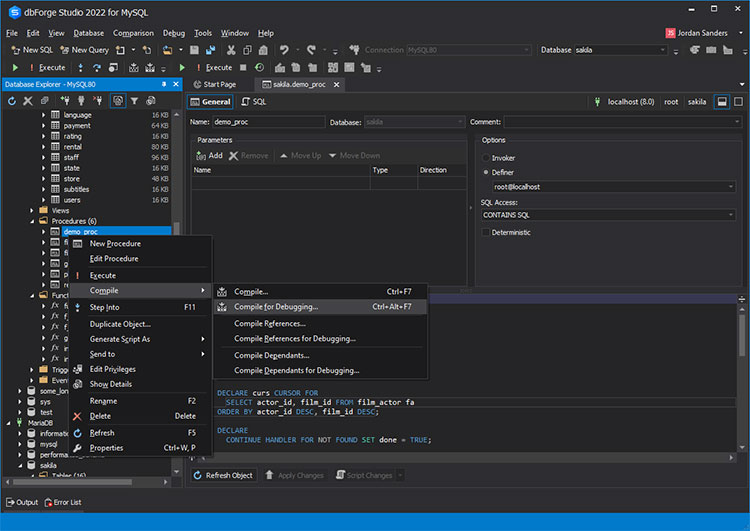MySQL database is an essential component of any website or application. They store data that is used by the application or website. MySQL is a free and open-source database management system.
MySQL Debugger tool can be a very useful tool in debugging SQL code. It can help you to visually analyze and investigate the run-time behavior of MySQL database objects and find database-related errors in your stored routines.
Why Should You Debug MySQL Code?
When developing a website or application that uses a MySQL database, it is inevitable that you will come across errors in your MySQL Code. If you are not using a debugger, then fixing these errors can be a very time-consuming process. A debugger is a tool that allows you to execute your SQL queries line by line so that you can see exactly where the error is occurring.
In order to get the most out of the MySQL Debugger, there are many reasons to use it. Some examples are as follows:
- You’re trying to track down an error in a MySQL query.
- You want to optimize a MySQL query for better performance.
- To troubleshoot a problem, you need to generate a slow query log.
MySQL Debugger can be extremely helpful when trying to track down errors in MySQL code. It can help us identify the line of code that is causing an error and help us understand why the error is occurring so that our programs can run efficiently.
How MySQL Debugger works?
The process of debugging SQL queries can be a bit difficult, but with the right tools and techniques, it can be made relatively simple. In this blog post, we’ll show you how to debug SQL queries in MySQL, so you can ensure that your code is error-free and running smoothly.
Examples of Using Debugger for MySQL
Debugger for MySQL is the most helpful tool for developers; there are many debuggers for MySQL query are available in the market, like MySQL Workbench, DbGate, dbForge Studio for MySQL and DbVisualizer. They are graphical tools that allow you to see the progress of your query and the results that it returns.
MySQL comes with a built-in tool called the MySQL Query Analyzer that can help you debug your queries. Although dbForge Studio for MySQL is one of the most renowned and excellent app for debugging the MySQL queries, debugging MySQL functions, MySQL triggers ad stored routines to ensure the smooth development process. Using MySQL GUI by Devart, you can find the cause of errors along with other valuable features.

dbForge Studio for MySQL provides many other tools to manage a database, allowing you to see the execution plan of a query and the estimated number of rows that will be returned by the query.
No matter which method you choose, debugging SQL queries in MySQL can save you a lot of time and frustration.
Advanced Overview of Debug Engine
If you want to debug stored procedures, functions, and triggers, the debug engine should be installed on the server. Debugging technology involves servers, so the debug engine is a server part of it. This system is the base of the database engine and is used for debugging.
You’ll be asked whether to deploy the debug engine when it’s not already installed, or to compile stored procedure with debugging information.
You can redeploy or deploy it at any time by selecting Deploy Debug Engine on the Debug menu. You need to remove the cr_debug database from the server to deactivate it.
To deploy debug engine you need to have PROCESS global privilege and the following privileges on cr_debug database (or global ones):
- SELECT
- CREATE
- DROP
- CREATE ROUTINE
How to Compile Stored Procedures, Functions, and Triggers for Debugging
You need to debug stored procedures, functions, and triggers by compiling them with the debugging information. To debug a procedure, function or trigger, right-click it and select Compile for Debugging.
If you run the debug session, you will see the prompts for compiling the functions in which you are interested. To remove debug info from the stored procedure, function or trigger, right-click the name of the object in the database and select Compile on the shortcut menu.
Debug compilation is used to add additional information to your project files so that you can have better visibility into how the software is functioning. dbForge Studio helps you debug stored procedures, functions, and triggers, without the need to open your query editor and check the “Show compiled columns” box in your query.
These sentences don’t affect logic that was already stored. Compiling without debug information removes this code from the compiled routine.
Conclusion
Hopefully, this blog post has given you a better understanding of the Debugger for MySQL and why you might need to use it. If you have issues with MySQL debug queries or want to track down performance and security issues. Be sure to give the dbForge Studio for MySQL a try.